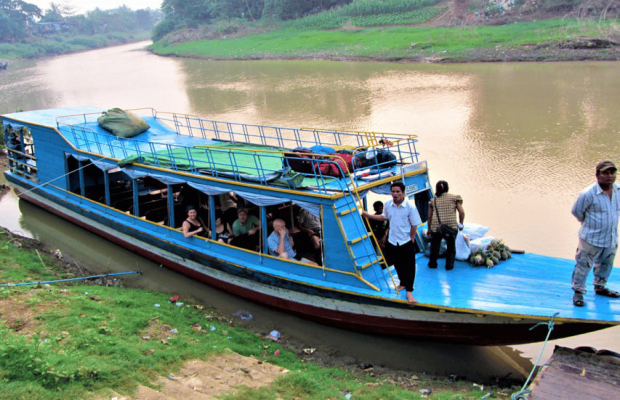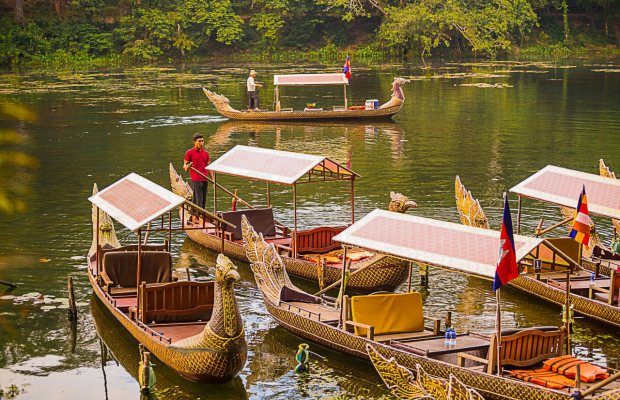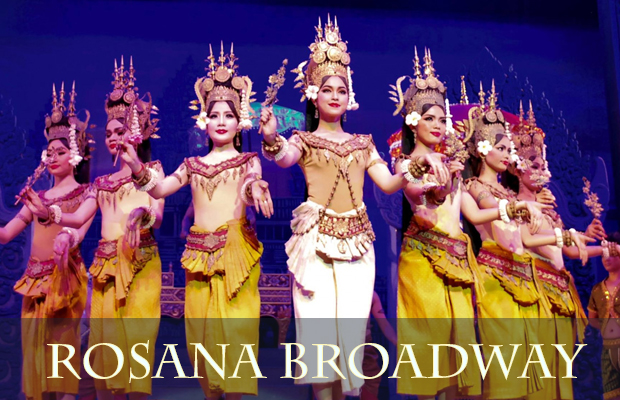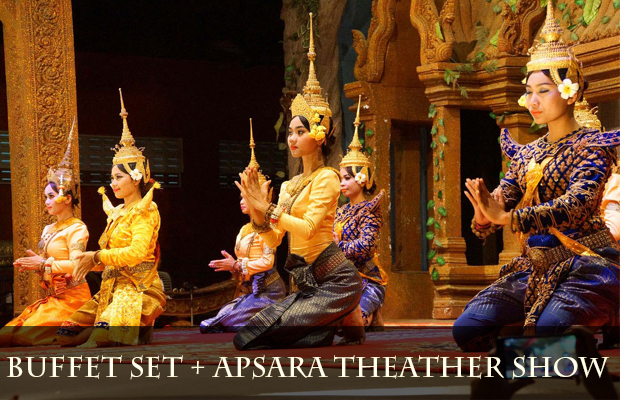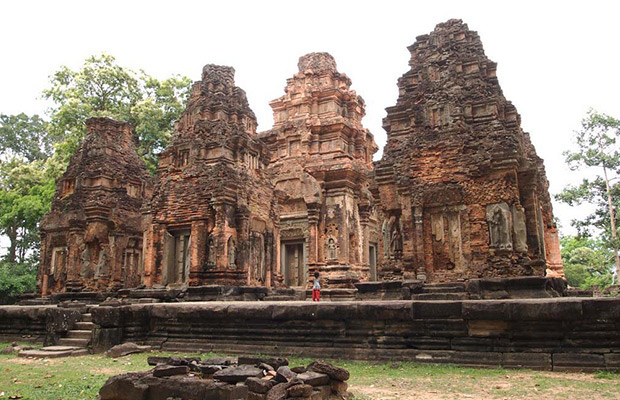Cambodia Temple Guide
Banteay Srei Temple
Banteay Srei or Banteay Srey is a 10th century Cambodian temple dedicated to the Hindu god Shiva. Located in the area of Angkor in Cambodia. It lies near the hill of Phnom Dei, 25 km (16 mi) north-east of the main group of temples that once belonged to the medieval capitals of Yasodharapura and Angkor Thom. Banteay Srei is built largely of red sandstone, a medium that lends itself to the elaborate decorative wall carvings which are still observable today. The buildings themselves are miniature in scale, unusually so when measured by the standards of Angkorian construction. These factors have made the temple extremely popular with tourists, and have led to its being widely praised as a "precious gem", or the "jewel of Khmer art.
Banteay Srei is a temple in Cambodia built in honor of female deities, representing strength, unity, and safety. This pilot is now sustained as an organization that provides social support, healing arts, reproductive health education, life skills-building, leadership development to young Southeast Asian women impacted by sexual exploitation in their communities.
Banteay Srei is dedicated to providing the tools and support necessary for young Southeast Asian women and girls to empower themselves. Based in Oakland, we are an organization that works with young women and girls ages 14-19, that are at-risk or are being sexually exploited. Banteay Srei believes that every person is entitled to living a free, happy and healthy life that is full of options. Through our programs and events that promote leadership development, cultural awareness and self-empowerment, we are working towards creating a generation of fierce, independent and self-empowered young Southeast Asian women.
History of Banteay Srey Temple
Consecrated on the 22nd of April, 967 A.D, Bantãy Sr?i was the only major temple at Angkor not built by a monarch; its construction is credited to a courtier named Yajnavaraha / Yajñavar?ha, who served as a counsellor to king R?jendravarman II .The foundational stela says that Yajñavar?ha, grandson of king Har?avarman I was a scholar and philanthropist who helped those who suffered from illness, injustice, or poverty. His pupil was the future king Jayavarman V (r. 968- ca. 1001) Originally, the temple was surrounded by a town called ??varapura.
It has been speculated that the temple's modern name,Bantãy Sr?i, is due to the many devatas carved into the red sandstone walls.
Yajñavar?ha's temple was primarily dedicated to the Hindu god ?iva. Originally, it was carried the name Tribhuvanamahe?vara — great lord of the threefold world — in reference to the Shaivite li?ga that served as its central religious image. However, the temple buildings appear to be divided along the central east-west axis between those buildings located south of the axis, which are devoted to ?iva, and those north of the axis, which are devoted to Vi??u.
The temple's modern name, Bantãy Sr?i — citadel of the women, or citadel of beauty — is probably related to the intricacy of the bas relief carvings found on the walls and the tiny dimensions of the buildings themselves.[6] Some have speculated that it relates to the many devatas carved into the walls of the buildings
Materials and style
The temple was rediscovered only in 1914, and was the subject of a celebrated case of art theft when André Malraux stole four devatas in 1923 (he was soon arrested and the figures returned). The incident stimulated interest in the site, which was cleared the following year, and in the 1930s Banteay Srei was restored in the first important use of anastylosis at Angkor. Until the discovery of the foundation stela in 1936, it had been assumed that the extreme decoration indicated a later date than was in fact the case. To prevent the site from water damage, the joint Cambodian-Swiss Banteay Srei Conservation Project installed a drainage system between 2000 and 2003. Measures were also taken to prevent damage to the temples walls being caused by nearby trees.
Unfortunately, the temple has been ravaged by pilfering and vandalism. When toward the end of the 20th century authorities removed some original statues and replaced them with concrete replicas, looters took to attacking the replicas. A statue of Shiva and his shakti Uma, removed to the National Museum in Phnom Penh for safekeeping, was assaulted in the museum itself.
The Sanctuary
The sanctuary is entered from the east by a doorway only 1.08 m in height: inside is an entrance chamber (or ma??apa) with a corbelled brick roof, then a short corridor leading to three towers to the west: the central tower is the tallest, at 9.8 m. Glaize notes the impression of delicacy given the towers by the antefixes on each of their tiers. The six stairways leading up to the platform were each guarded by two kneeling statues of human figures with animal heads; most of those now in place are replicas, the originals having been stolen or removed to museums.

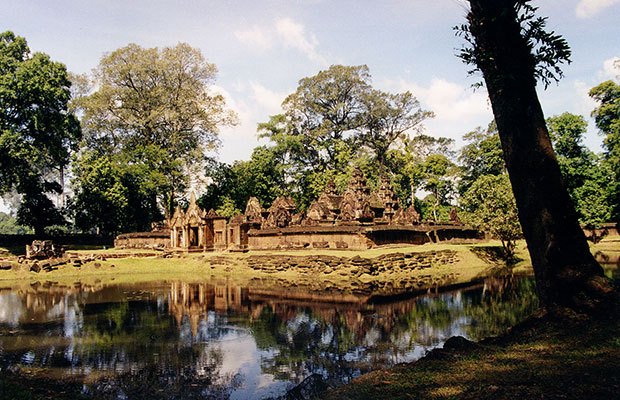

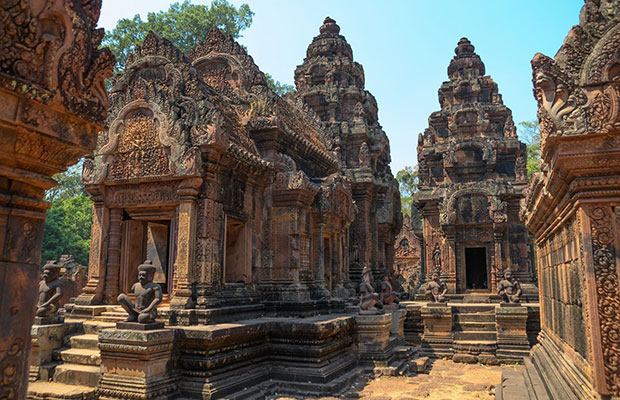


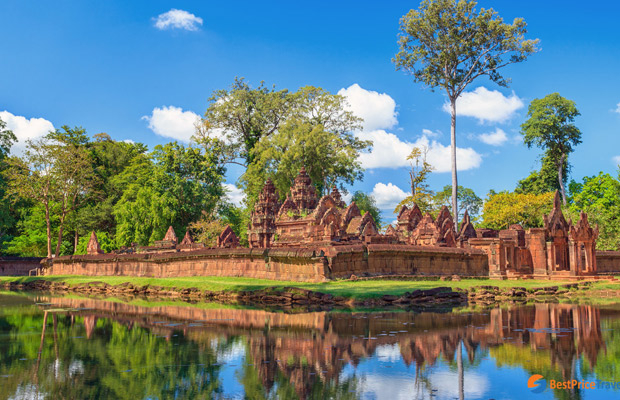




.jpg)


